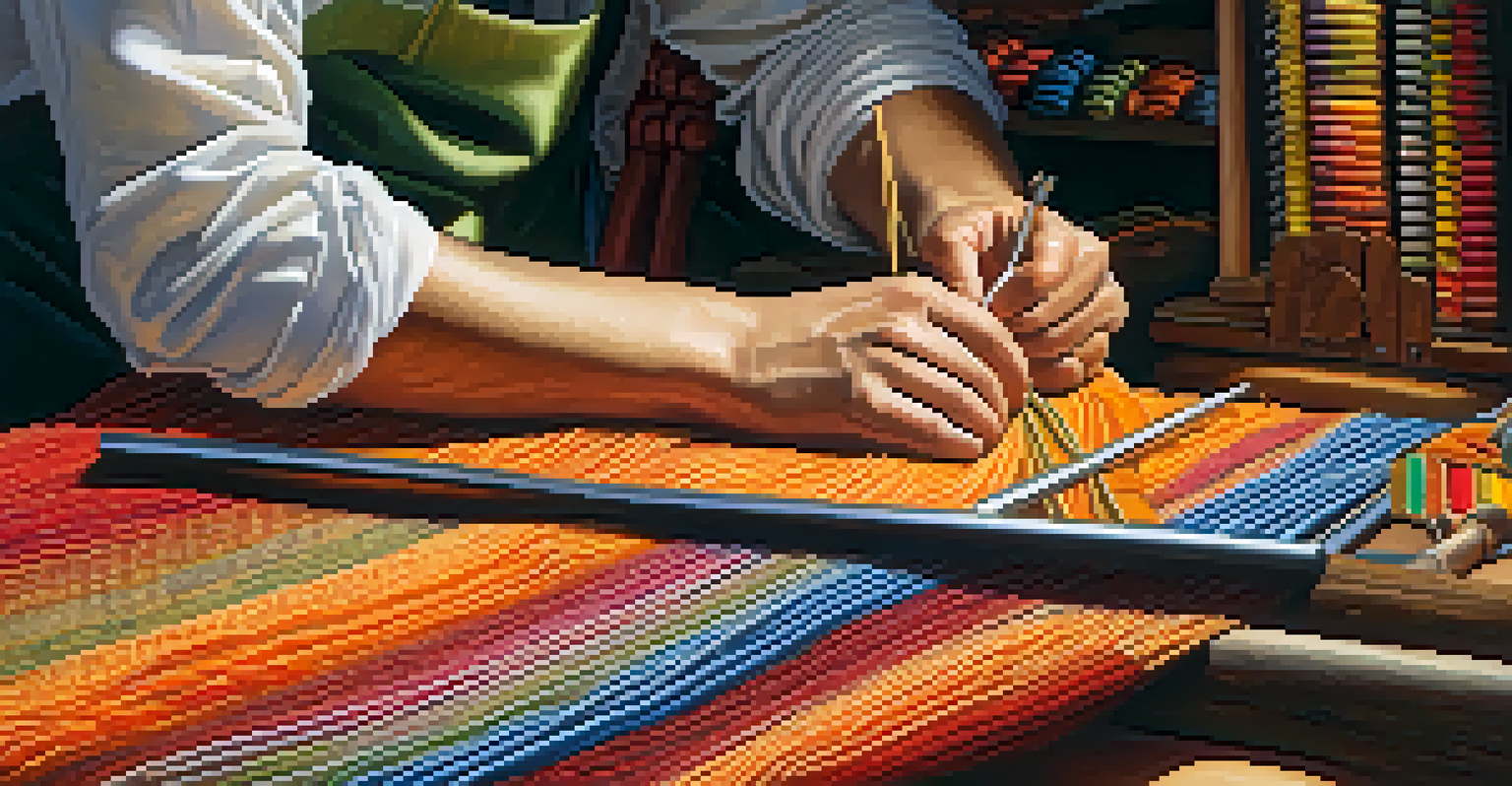Cultural Appropriation in Art: Ethics and Aesthetic Considerations

Defining Cultural Appropriation in Artistic Contexts
Cultural appropriation in art refers to the adoption of elements from one culture by artists from another, often without permission or understanding. This can involve anything from traditional designs and motifs to the themes and narratives that are integral to a culture's identity. It's crucial to distinguish this from cultural appreciation, which involves respect and acknowledgment of the source culture.
Cultural appropriation is the act of taking or borrowing elements from a culture without permission, often resulting in a lack of respect for the original culture and its significance.
When artists borrow from different cultures, they risk diluting the original meanings and significance, which can lead to further marginalization of those cultures. This is particularly sensitive when the appropriated culture has a history of oppression or is a minority in the context of the borrowing artist. Therefore, understanding the nuances of cultural appropriation requires a deep dive into both the ethical and aesthetic implications.
As the art world continues to evolve, conversations around cultural appropriation have become more prominent. Artists, critics, and audiences are increasingly demanding that creators engage thoughtfully with the cultures they draw inspiration from. This growing awareness highlights the importance of context in artistic expression.
The Ethical Implications of Cultural Appropriation
Ethics in cultural appropriation revolve around issues of power, privilege, and respect. When an artist from a dominant culture appropriates elements from a marginalized culture, it can perpetuate stereotypes and reinforce societal inequalities. This dynamic raises questions about who gets to tell a story and which narratives are prioritized in the art world.

For instance, consider an artwork that uses traditional Indigenous symbols but comes from an artist outside that community. This can be seen as exploitative, particularly if the artist profits from this work without contributing to the source community. Ethical considerations encourage artists to think critically about their sources and the impact of their work.
Understanding Cultural Appropriation
Cultural appropriation involves taking elements from one culture by artists from another, often without permission or understanding.
Furthermore, the conversation about ethics in art is not just about avoiding harm; it's also about fostering dialogue and understanding. Artists can choose to collaborate with members of the culture they wish to represent, creating authentic and respectful exchanges that enrich the artwork and respect its origins.
Aesthetic Considerations in Cultural Representation
Aesthetically, cultural appropriation poses interesting challenges. When artists incorporate elements from other cultures, they often do so to create visually striking pieces. However, this can lead to a superficial understanding of the cultural significance behind those elements, reducing rich traditions to mere decoration.
Art should be a reflection of culture, not a misrepresentation of it. When we borrow from cultures, we must do so with understanding and respect.
For example, using African tribal patterns in fashion without acknowledging their cultural significance can strip them of their original context. This not only misrepresents the culture but can also lead to a lack of authenticity in the artwork. Artists need to be aware that aesthetic choices carry weight and meaning, and these should be respected.
Moreover, art is a reflection of society, and how cultures are represented can influence public perception. Aesthetics in art should not just be about visual appeal but also about conveying a deeper message that honors the culture being represented. This can lead to more impactful and thought-provoking art.
The Role of Intent in Cultural Appropriation
Intent plays a significant role in discussions about cultural appropriation. An artist's motivations behind using cultural elements can determine whether their work is perceived as appropriative or appreciative. When the intent is to exploit or commodify, it often leads to backlash and criticism.
Conversely, if an artist genuinely seeks to honor and celebrate another culture through their work, they may be viewed more favorably. This distinction underscores the importance of self-reflection and awareness in the creative process. Artists must ask themselves why they are drawn to a particular culture and what their work says about that culture.
Ethics and Intent Matter
The ethical implications of cultural appropriation hinge on power dynamics and the intent behind using cultural elements.
Ultimately, intent should not be the sole measure of appropriateness; it must be coupled with an understanding of the potential impact of one's work. Engaging with the culture thoughtfully and respectfully can transform an artist's approach and lead to more meaningful contributions.
Navigating the Fine Line: Appreciation vs. Appropriation
Navigating the line between cultural appreciation and appropriation can be tricky. Appreciation involves a genuine respect and understanding of another culture, often supported by relationships with members of that culture. This can manifest in collaborative projects or works that clearly credit the source culture.
In contrast, appropriation often disregards the cultural significance of elements being borrowed. This distinction can be blurry, and different communities may have varying perspectives on what constitutes appropriation versus appreciation. It's essential for artists to engage in active listening and dialogue with the cultures they draw from.
One way to foster appreciation is through education—artists can educate themselves about the histories and meanings behind the cultural elements they wish to incorporate. This approach not only enhances their work but also demonstrates respect for the cultures involved.
Case Studies: Cultural Appropriation in Famous Artworks
Examining case studies can provide valuable insights into cultural appropriation in art. For instance, consider the controversy surrounding certain fashion designers who have faced backlash for using Native American headdresses in their collections. These items, rich in cultural significance, became symbols of commodification rather than respect.
Similarly, artists like Jean-Michel Basquiat have sparked discussions about the intersection of race, culture, and appropriation in their work. His pieces often blend elements from African American culture with traditional Western art forms, prompting debates about authenticity and ownership. These examples highlight how appropriation can manifest in diverse ways, often igniting passionate discussions.
Best Practices for Artists
Artists can navigate cultural appropriation thoughtfully by researching cultures, building relationships, and being open to feedback.
Such case studies remind us that the conversation around cultural appropriation is dynamic and evolving. They challenge artists and audiences alike to examine their own practices and perceptions, fostering a more nuanced understanding of cultural representation.
Moving Forward: Best Practices for Artists
For artists looking to navigate cultural appropriation thoughtfully, there are best practices to consider. First, conducting thorough research about the culture they wish to engage with is crucial. Understanding the historical context and significance of cultural elements can help artists avoid unintentional appropriation.
Second, building relationships with individuals from that culture can lead to more authentic representations. Collaboration can enrich the creative process and ensure that the work honors its source. Engaging with community members not only provides insights but also fosters mutual respect.

Lastly, artists should embrace openness to feedback. Being receptive to critiques about their work and its cultural implications can lead to growth and improvement. By prioritizing respect and understanding in their creative process, artists can create meaningful art that resonates with diverse audiences.